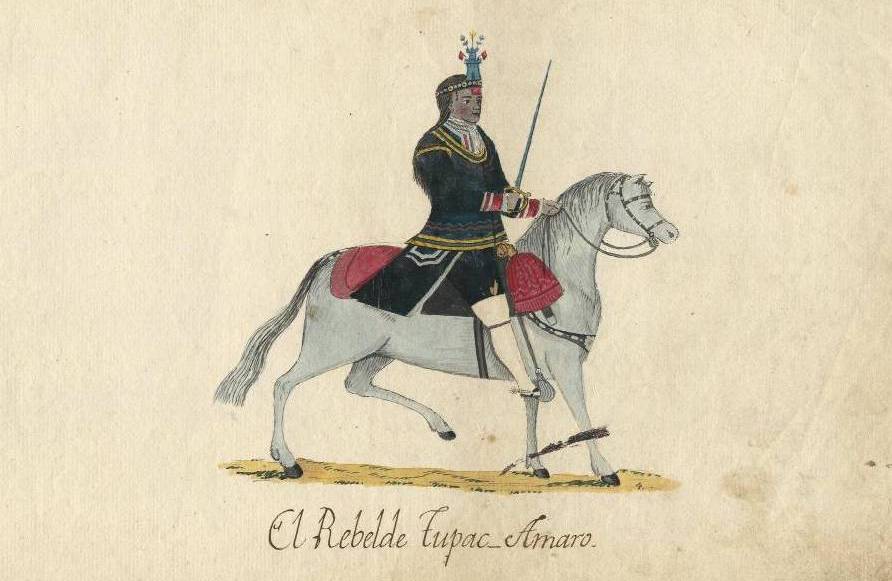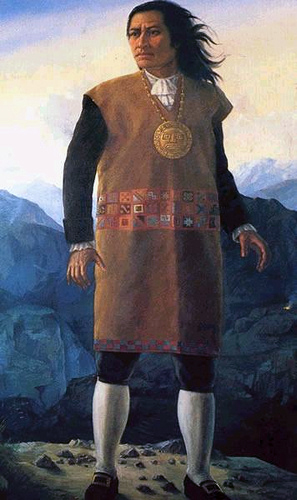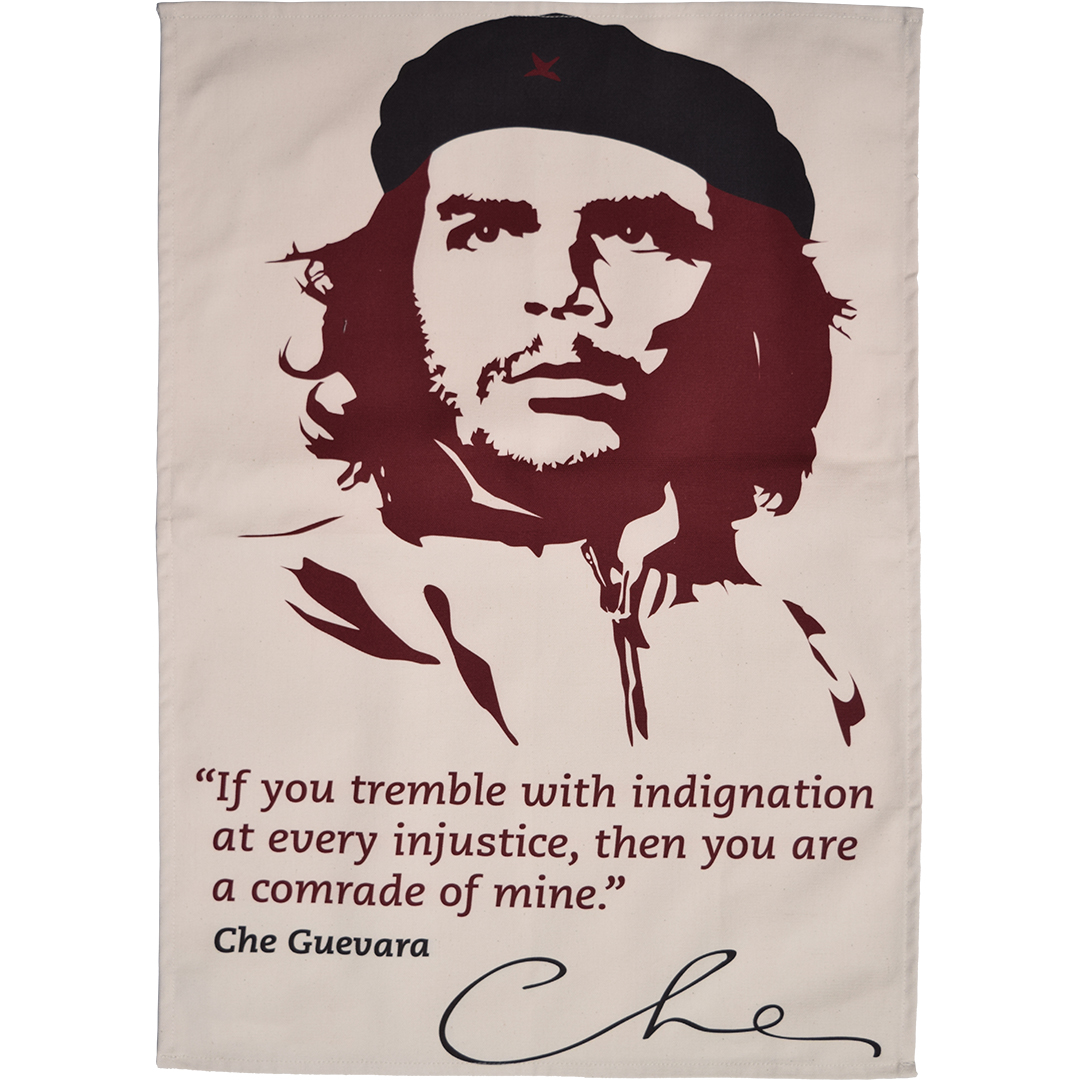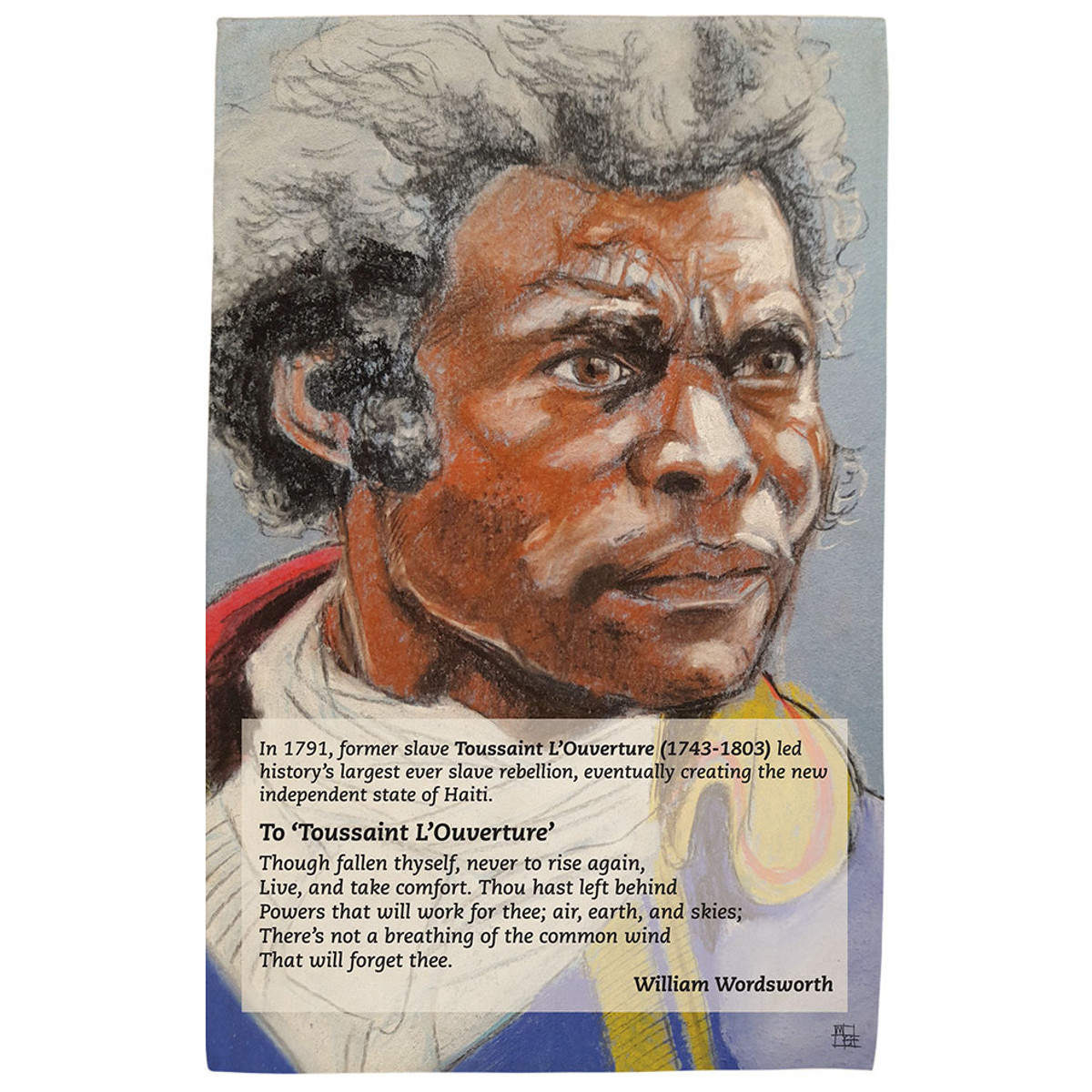Revolution in the Andes: The Life of Túpac Amaru II
Posted by Pete on 21st Mar 2023

Túpac Amaru II gave his life in the fight against Spanish colonialism
Decades before Simón Bolivar and José de San Martin fought the wars of Spanish American independence, there was a Great Rebellion in the Andes.
From 1780 to 1783, tens of thousands of indigenous people rose up against colonialism in what’s now Perú and Bolivia.
In the end, the Rebellion was repressed by Spanish troops. But the lesson was everlasting: do not mess with the indigenous peoples of South America.

Túpac Amaru II led the 1780s rebellion against Spanish rule
Ever since the region was violently conquered by Spain in the sixteenth century, the indigenous population had been oppressed and exploited by a ruthless system of racial and class hierarchy.
The mass of “
indios”, who formed a majority of the population in Peru under Spanish rule, were subjected to forced labour on public works and down the mines. Over the centuries, hundreds of thousands died from the brutal labour conditions.
On top of this, there was a head tax – or ‘Tribute’ – extracted from the indigenous communities. And they were placed under a separate legal system, as a form of apartheid.
Then, during the eighteenth century, the exploitation became even more extreme.
The new Bourbon dynasty in Spain wanted to increase imperial revenues in America. Tax collection became stricter, and any ‘give’ left in the system was squeezed out.
Things were about to blow. The indios of Peru were about to fight back.
Che Guevara may be the face of revolution in South America, but the anti-colonial struggle dates back to the sixteenth century
Click to view our Che Guevara tea towel
Nor was it the first time. Stretching back to the Conquest, there was a long tradition of indigenous resistance to Spanish empire.
And, by 1780, the wider Atlantic world was on fire with revolutionary politics. The U.S. was still fighting its
war of independence against Britain.
In November 1780, the indigenous leader José Gabriel Condorcanqui began a rebellion.
Claiming descent from the last Inca monarch, Túpac Amaru I, José took the title Túpac Amaru II. Leading a force of mostly indigenous troops, he arrested one of the new Bourbon tax collectors.
Túpac Amaru’s rebellion was, officially, loyal to the King of Spain. It was opposed to the colonial way in which Peru, and especially its indigenous population, was governed.
But as the Rebellion progressed, mobilising tens of thousands more men and women, talk of independence seeped into the revolutionary discourse. Perhaps Spanish rule could be replaced by a new Inca state.
The end of the 18th century was a time of great radical change, from Amaru in the Andes to Toussaint L'Ouverture in Haiti
Click to view our Toussaint L'Ouverture tea towel
As the rebel army advanced around Cusco, it destroyed the Bourbon customs houses and prisons.
Indigenous women played a leading role in the struggle, such as Micaela Bastidas, Amaru’s wife and a key commander of the rebel campaign.
And elsewhere in the Andes, in Upper Peru (now Bolivia), another indigenous rebellion had been launched.
The whole edifice of Spanish rule was genuinely teetering. Indigenous liberation was near at hand.
But then the rebels faltered. Túpac Amaru was slow to besiege the strategic city of Cusco, which allowed time for Spanish reinforcements to arrive.
And the Rebellion was depicted as an indigenous race war by the government, when in fact it included members from all parts of colonial society. But the propaganda was enough to drive a wedge between the rebels and non-indigenous ethnic groups.
As crown forces regained the initiative in the Andes, Túpac Amaru was betrayed and arrested in April 1781.
A month later, in Cusco, he was made to watch his entire family – who had helped him lead the Rebellion – be executed, before being barbarically hanged, drawn, and quartered himself.
It was a calculated and explicit act of terror by the Spanish courts, intended to crush indigenous dissent.
But it didn’t work.
Rebellion went on in the Andes for another two years, ending on this day in 1783. And, despite beating Túpac Amaru II militarily, the Bourbon regime still had to back down on most of its unpopular economic demands.
Then, later, the indigenous masses in the Andes played an active role in the independence revolutions. And the radical tradition of the Great Rebellion of 1780-83 continues to inspire the vibrant and internationalist
indigenismo movements in Latin America today.
It belongs to the wider and ongoing history of
indigenous resistance to European colonialism in the Americas. As Túpac Amaru I, the last Inca monarch, roared upon his own execution in 1572:
“I will return and I will be millions.”


